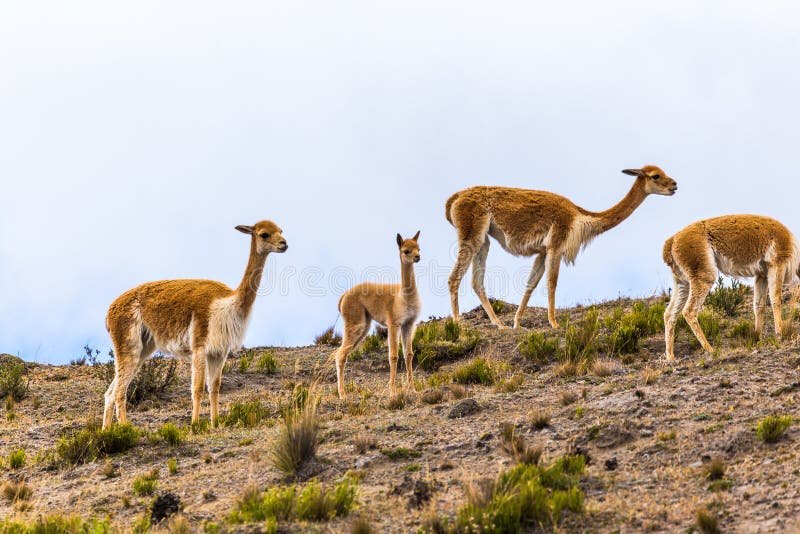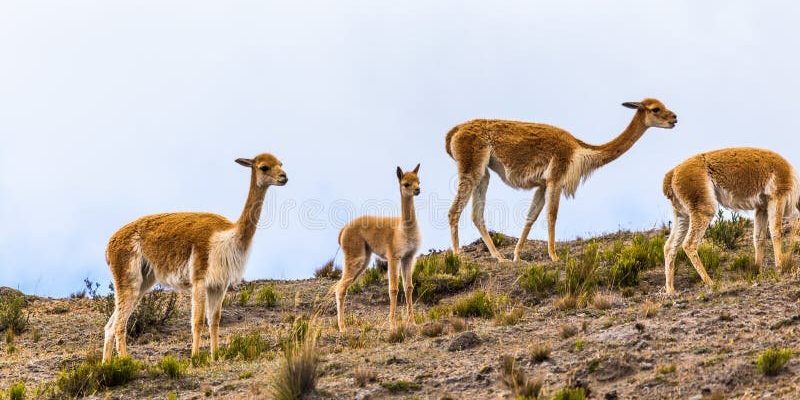
Vicuñas thrive in harsh mountain environments, where survival is no small feat. Their nurturing ways are not just about keeping the babies fed; it’s also about ensuring they grow up with the skills needed to flourish. So, let’s dive into how these charming animals raise their young and why their approach is particularly fascinating.
Understanding Vicuñas: A Quick Overview
Vicuñas are small, graceful animals native to the Andes mountains. They look a bit like alpacas but are slimmer and have a finer, softer coat. You might find them munching on grass or grazing on high-altitude vegetation. Living in herds, these animals rely heavily on one another for protection and support.
These gentle creatures have adapted beautifully to their environment. They can manage life at altitudes over 12,000 feet! This high-altitude life means they are not just surviving but thriving. Their social behavior and maternal instincts play a vital role in how they raise their young, ensuring they have a community that helps them grow.
The Role of Mothers in Vicuñas’ Lives
Let’s talk about the star of the show: the mother vicuña. When a mother becomes pregnant, she carries her young for about 11 months, which is quite a long time for a creature of her size. Vicuñas usually give birth to a single cria (that’s what you call a baby vicuña). This cria is usually born after the rainy season when food is more abundant.
Once the cria arrives, the mother provides not just food but also warmth and protection. The coat of a vicuña isn’t just for show! It keeps the baby snug in the chilly Andes. And here’s a neat fact: right after birth, the baby is up and about, trying to walk within just a few hours. This quick start is crucial for survival, as being mobile helps them escape from potential predators.
Communal Care: It Takes a Village
Here’s the thing—vicuñas don’t just rely on their moms. The herd plays a vital role in raising young vicuñas. When mothers are grazing, other females in the herd will keep an eye on the crias, ensuring they are safe. This communal approach adds an extra layer of protection and social learning for the young ones.
You might be wondering how this works in practice. Picture it: While one mother leads the crias away from danger, another female watches over them like a vigilant lifeguard. This not only helps keep the crias safe but also teaches them about their environment and social interactions. They learn how to communicate and recognize threats, giving them the skills they need to survive.
Feeding and Nutrition: A Critical Step
After birth, the most critical task for a mother vicuña is providing milk to her cria. Vicuña milk is rich in nutrients, helping the young ones grow strong and healthy. This milk provides all the essential proteins and fats that the baby needs during those early weeks.
As the cria grows, they begin to nibble on grass and other vegetation, mimicking their mothers. The transition to solid food is gradual, making sure they get the best of both worlds—perfectly timed milk and nourishing plants. This careful balance is essential because, in their harsh environment, nutrition can make the difference between life and death.
Learning Social Skills: The Importance of Play
Have you ever watched young animals at play? It’s not just cute; it’s crucial for their development! Vicuña crias engage in playful behaviors, which might look like frolicking or chasing each other around. But there’s more to it.
Through play, these young ones learn important social skills and build friendships. They practice running and jumping, which prepares them for real-life situations like escaping from predators or navigating through rocky terrains. It’s a bit like kids on a playground learning to share and cooperate—every tumble and tussle is a lesson in teamwork and survival.
Maturation: Growing Up in the Wild
As vicuñas grow, their independence increases. By around six months, crias are weaned, and they start to join in the herd’s grazing routines. They imitate the adults, learning what to eat and how to forage from the other members of the group.
You might find it interesting that vicuñas typically stay with their mothers for up to a year. This extended period allows them to develop not just physically but also socially. They absorb all those vital lessons that come with being part of a herd. Maturity in vicuñas isn’t just about age; it’s about learning the ropes in their often challenging environment.
Challenges in the Wild and Conservation
While vicuñas have developed impressive strategies for raising their young, they face numerous challenges. Climate change, habitat loss, and poaching put their survival at risk. Their delicate ecosystem is constantly changing, which can impact food sources and living conditions.
Conservation efforts are essential to ensure that these beautiful animals continue to thrive in the wild. Various organizations are working to protect their habitats and create awareness. These efforts are vital not just for vicuñas but for the entire ecosystem they inhabit.
Vicuñas have a unique way of raising their young that highlights the importance of community and adaptation. Their nurturing system, where mothers and the entire herd play pivotal roles, is a beautiful dance of survival in one of the harshest climates on Earth. As we admire these magnificent creatures, it’s crucial to understand their challenges and support efforts to protect them.
In the grand tapestry of life, the story of vicuñas and how they raise their young is just one thread, but it’s an inspiring one. So, next time you think about wildlife parenting, remember these gentle high-altitude animals and the lessons they teach about care, community, and resilience.

